They are very expensive, which is par for the course with uber-trendy brand Arc’teryx, but the construction, performance and design of these shell pants is definitely top-tier. Featuring 3-layer construction using Gore-Tex’s C-Knit backer technology, which is designed to deliver a “softer and measurably lighter” 3-layer waterproof without compromising on durability and protection, the Beta Pant is a premium product for the hardcore (and fashion-conscious) hiker undeterred by atrocious conditions.
Pros
- 3-layer design
- Gore-Tex technology
- Full-length zippers
- Durable protection
Cons
- Very expensive
- No stormflap on full-length zippers
- Poor waist drawstring design
| Men's sizes | XS-XL |
| Women's sizes | XS-XXL |
| Versions | Short, regular, tall |
| Weight | 326g (men's small) |
Arc’teryx describes the Beta Pant as “all-round mountain apparel”, delivering “high performance for diverse activities” and a “protective design for remote and varied conditions”. This all seems accurate and fair – the only drawback is the sky-high price-tag, which will be a deal-breaker for many.
Waterproofing
The Arc’teryx Beta Pant is made from Gore-Tex Performance, a 100% nylon material with an ePTFE membrane. The type of Gore-Tex used also features Gore C-Knit backer technology. C-Knit technology “fuses together three layers of material so that hikers...can stay dry, without adding bulk”, as Gore-Tex puts it. The inner (backer) is made from an extremely thin, circular knit to form a soft, smooth layer. Then comes the waterproof, windproof and breathable membrane made from ePTFE, followed by a smooth nylon outer fabric that ranges in thickness depending on the intended use and activity. The end result of this 3-layer construction technique is a highly protective and sturdy design. For long-term durability and long-term waterproofing in atrocious conditions, this is probably the most reliable construction technique available.
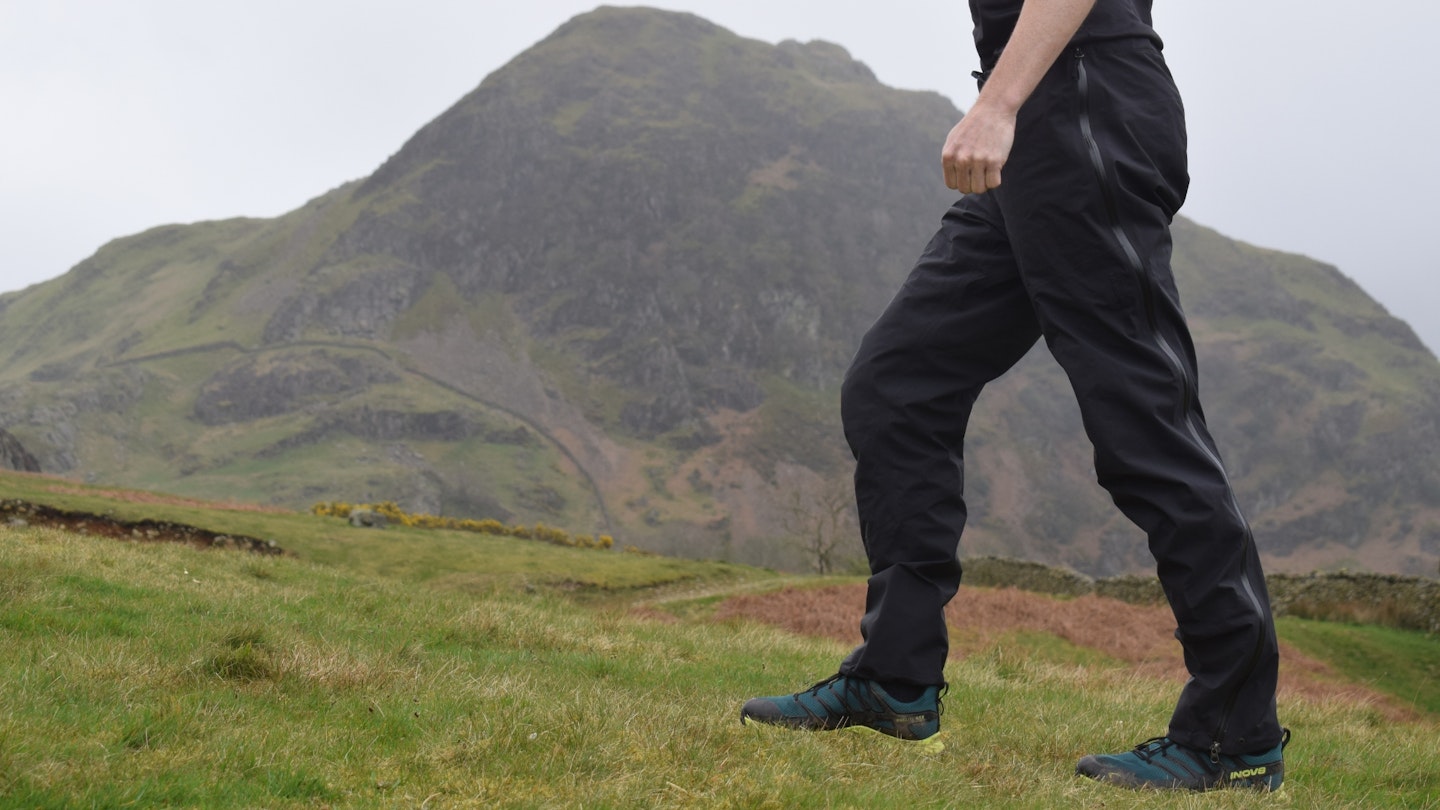
In terms of official waterproofing stats, confusingly Gore-Tex no longer publicly state the hydrostatic head or breathability ratings of their materials, explaining in a blog post that the lab tests used for the scores are “not relevant to real-life situations”, preferring instead to judge its products in its high-tech rain room simulator. There is probably some merit to this argument, however it doesn’t make like-for-like comparisons particularly easy for the general consumer. We persisted with Gore-Tex’s PR bods, and ultimately they told us all of their fabrics have a minimum 28,000mm hydrostatic head rating, but they don’t state different figures for their different technologies such as Gore-Tex Pro, Gore-Tex Performance and Gore-Tex Paclite.
As such, we can say for certain that the Arc’teryx Beta Pant has a minimum hydrostatic head rating of 28,000mm, which is a reassuringly top-tier grade. All Gore-Tex products come with Gore’s “guaranteed to keep you dry” promise too.
The seams in the Beta Pant are all sealed and, on initial inspection, the sealing appears to be very professional and precise. The side zippers are premium zippers with a highly water-repellent design, although they don’t have a stormflap, either internally or externally.
Breathability & Ventilation
The ventilation options here are superb, thanks to the full-length, two-way side zippers on both legs. You can unzip from the top downwards, creating large air vents for better breathability, with the top of the trousers kept in place via a press stud button. You can do the same from the bottom too, unzipping upwards from the ankle cuff. These full-length zippers make getting the trousers on and off, over chunky hiking boots, very easy too – it works flawlessly.
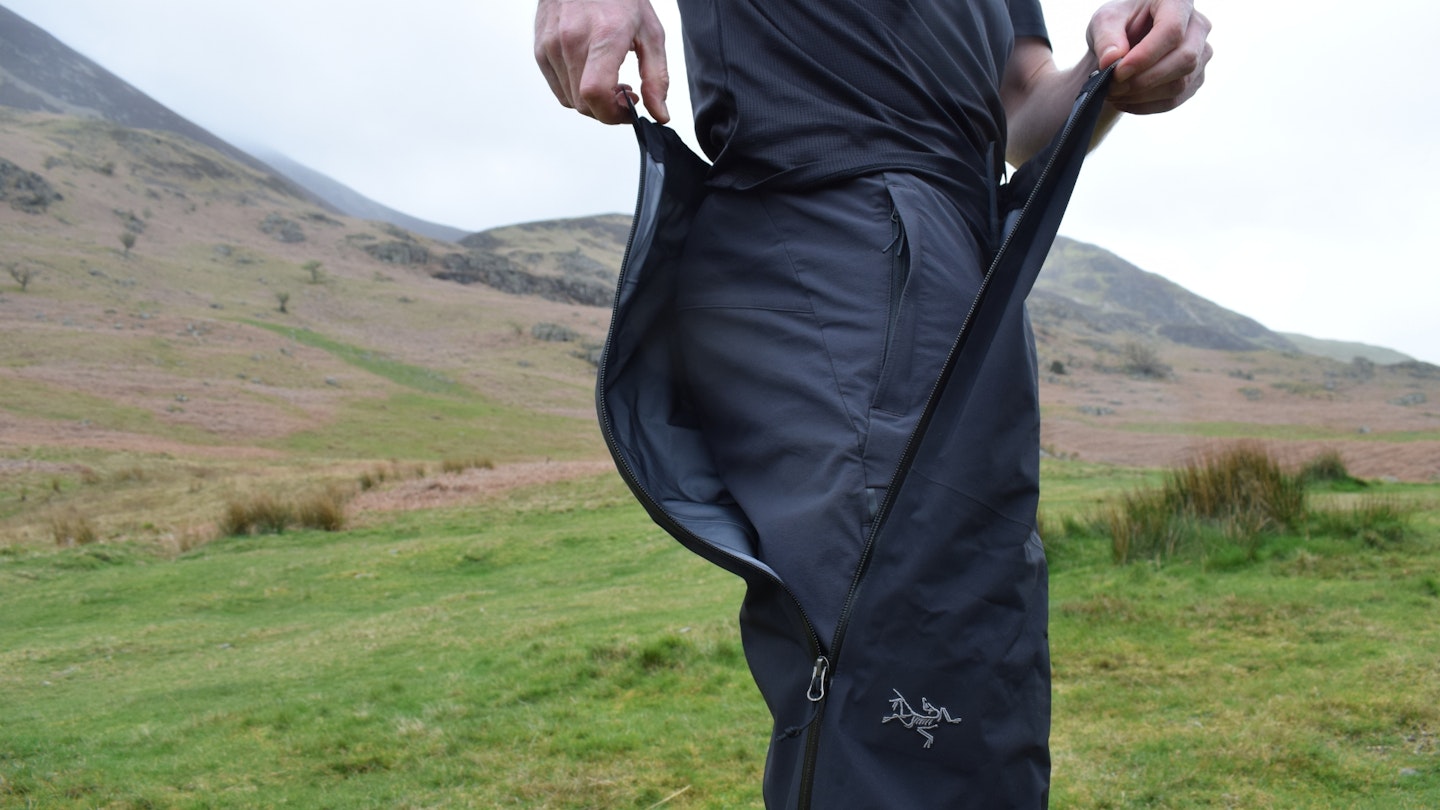
In terms of the official breathability grade of the Arc’teryx Beta Pant, there is more smoke and mirrors here from Gore-Tex. Gore-Tex tells us “we are moving away from communicating RET values for our products” and Arc’tertyx’s PR people have also been unable to confirm the rating to us. So, based on our (somewhat subjective) personal analsyis, we’d say the breathability of the Beta Pant is comparable to the breathability of the Montane Phase Waterproof Pull-On Pants. Or, in other words, the breathability is decent but not amazing, which is to be expected from a slightly heavier, thicker 3-layer pair of overtrousers. The excellent venting options of the Beta Pant are pretty effective at alleviating any sweating or clamminess, however.
Shop this product
Weight & Packability
The Arc’teryx Beta Pant (men’s small, regular leg length) weighs 326g on our scales. That’s slightly on the heavy end of the spectrum across the whole market of overtrousers, but it’s reasonably light considering the level of protection offered. 326g is a comparable weight to similar pairs, and the Arc’teryx Beta Pant is 14g lighter than its nearest rival, the Montane Phase Waterproof Pull-On Pants, for example. But don’t get the wrong impression. The Beta Pant is certainly not ultralight, and it weighs in at 115g heavier than the Berghaus Paclite Pant, for example.

The Arc’teryx Beta Pant packs down pretty small too, rolling neatly to the approximate size of a 1L Nalgene water bottle (20x10cm). Consequently these overtrousers won’t weigh down your backpack excessively or take up too much room in it.
Size, Fit & Comfort
We’d describe the fit of the Arc’teryx Beta Pant as a standard fit that’s true to size. We found the shell pants were reasonably snug and fitting with a slightly athletic feel, but without being restrictive or too tight. They moved well with the body and didn’t flap around or feel too loose either. All-round comfort levels were pretty high. As with most 3-layer waterproofs, they felt a touch stiffer and bulkier than lighter 2.5-layer designs, but this wasn’t a major problem – it felt like a small price to pay for the enhanced levels of sturdiness and protection.

Updated in recent years with a revised fit, Arc’teryx is very detailed in its description of the cut and fit of the Beta Pant. The brand describes the fit as “regular”, which is “cut comfortably throughout the waist, hip, and thigh” to “allow freedom of movement and provide shape”. The brand adds that comfort levels are further enhanced by the articulated patterning and gusseted crotch, which both allow for unrestricted mobility and improved freedom.
The Beta Pant is available in several size options, as well as three inseam lengths – short, regular and tall – meaning there should be a pair to fit all body shapes.
Shop this product
Features: Pockets, Waistband & Ankle Cuffs
There are no recycled materials used in the Beta Pant, so the sustainability credentials are not particularly impressive. However Arc’teryx adds that the product “contains materials that meet the bluesign criteria”.
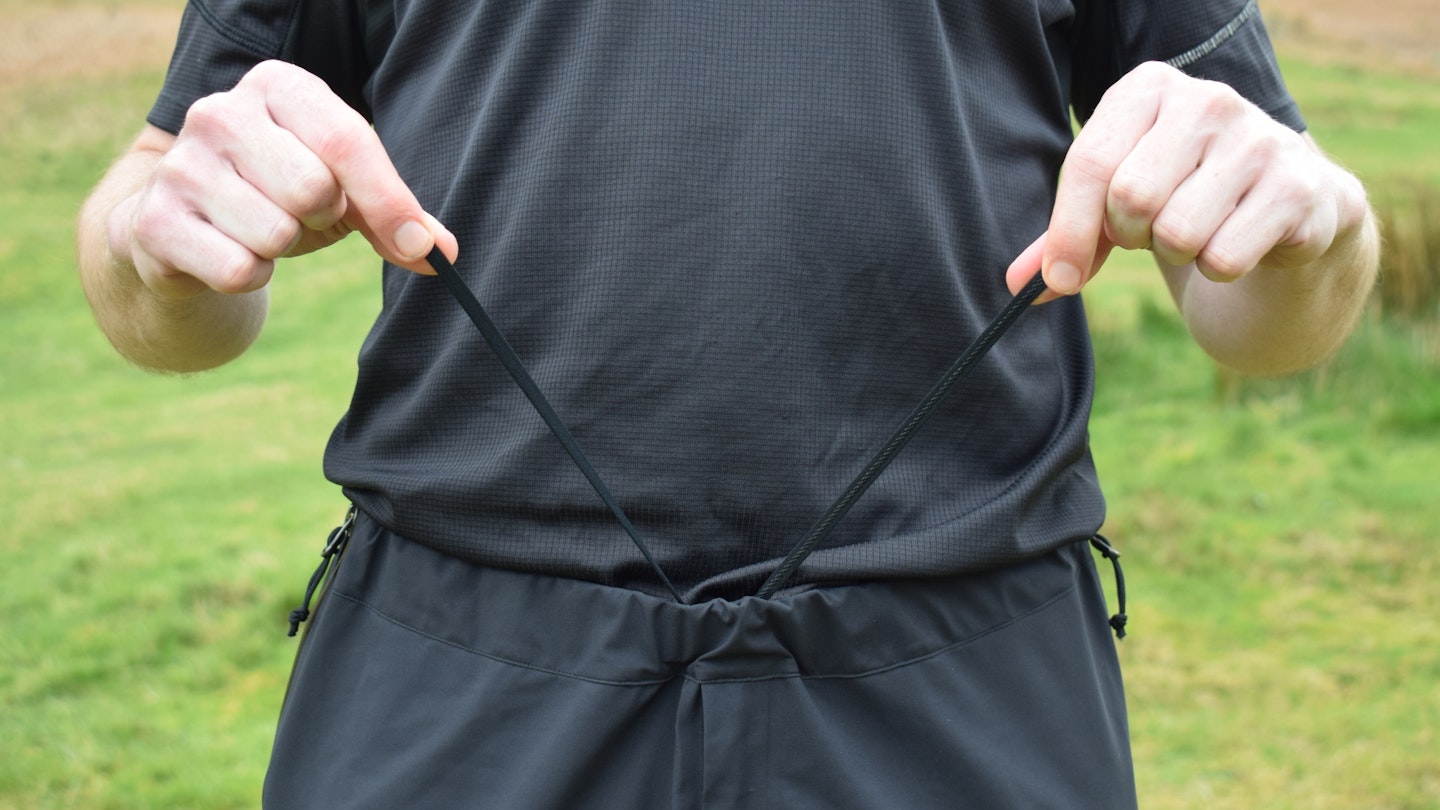
The waist hem is partly-elasticated and reasonably stretchy, with a drawstring you have to pull and tie up (like your shoe laces) for an adjusted fit. This isn’t the best design, only allowing slight changes in the tightness, and we’d prefer to see a super-stretchy drawcord toggle instead.
The ankle cuffs, however, do have a drawcord toggle for cinching in the fit around the top of your boots. This works excellently and ensures seamless integration of boot and overtrouser. The ankle cuffs also have laminated instep patches to guard against cuts and abrasion in an area of the trousers that is commonly vulnerable to wear and tear. Each cuff has one small metal eyelet located at its hem, provided “for shock cord attachments”, according to Arc’teryx. Although this feature was surplus to requirements during our tests and we never used it.
A more useful feature is the zippered fly, meaning it’s easier for men to address a call of nature in the wild without having to faff around with excessive legwear de-layering. Although having an extra zipper adds an additional water ingress risk, which is a slight worry.
You don’t get any pockets with the Beta Pant.
Verdict
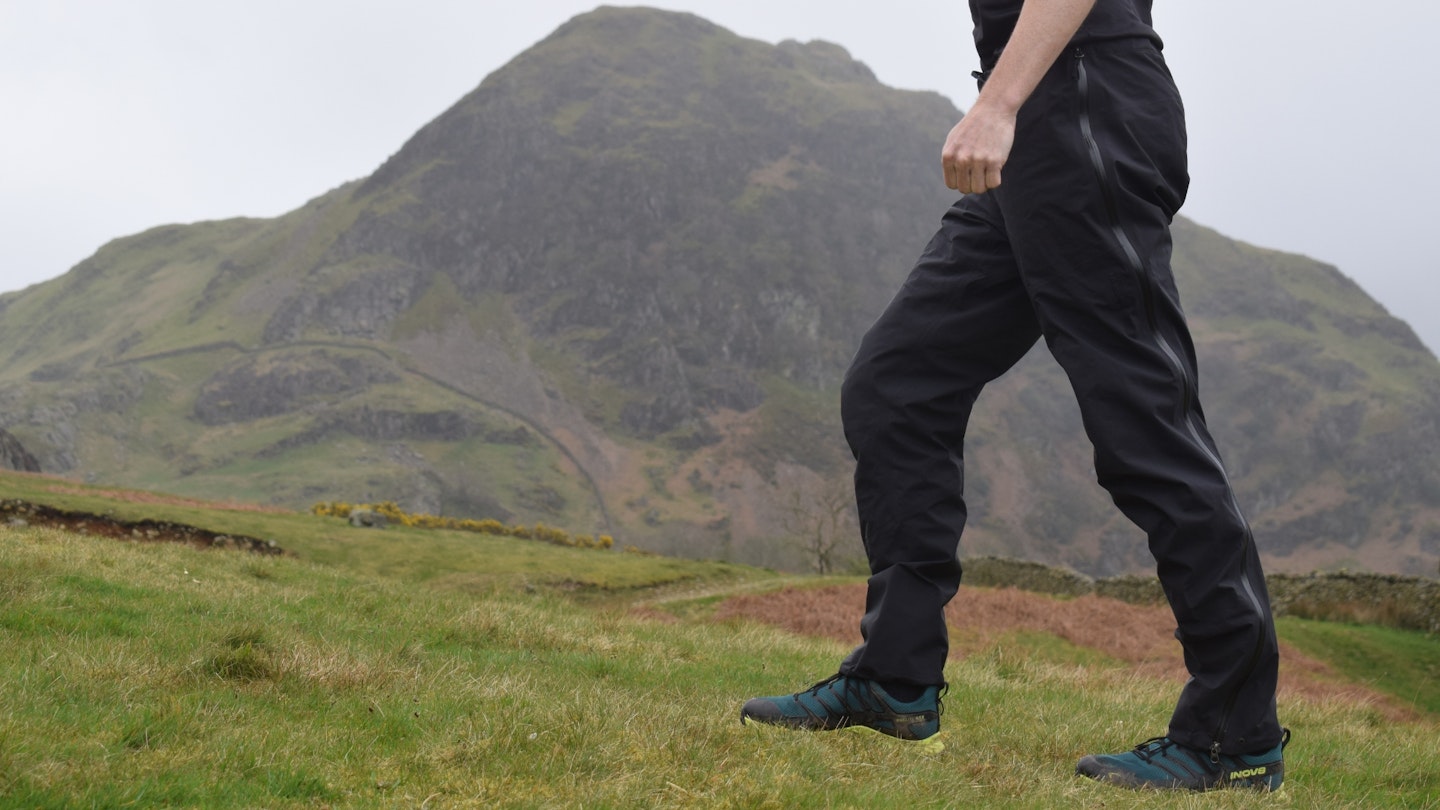
A high-end pair of waterproof overtrousers with Gore-Tex technology and a 3-layer design – but they are arguably over-priced.
Shop this product
About the author
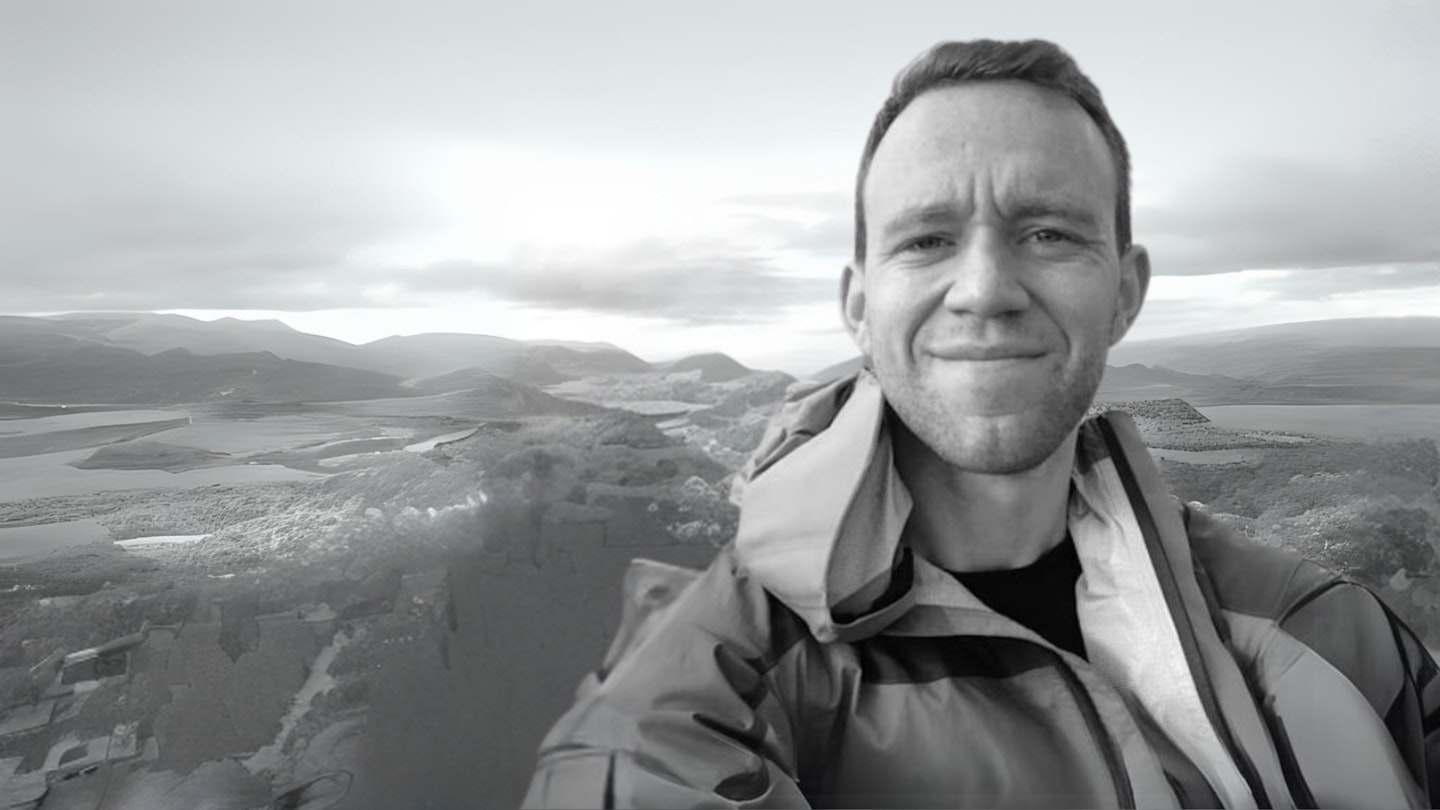
James Forrest is a prolific peak bagger and long-distance walker who’s one of the most high-profile outdoor writers in the UK. He writes regular features and route guides for Trail and has been one of our main gear testers for the last few years. James is based on the edge of the Lake District so when he isn’t off on his latest crazy adventure or challenge, he’s walking in his local fells. James reviews every type of outdoor kit for Trail and is a real authority on everything you need for wild camping and packing light for a multi-day walk.










